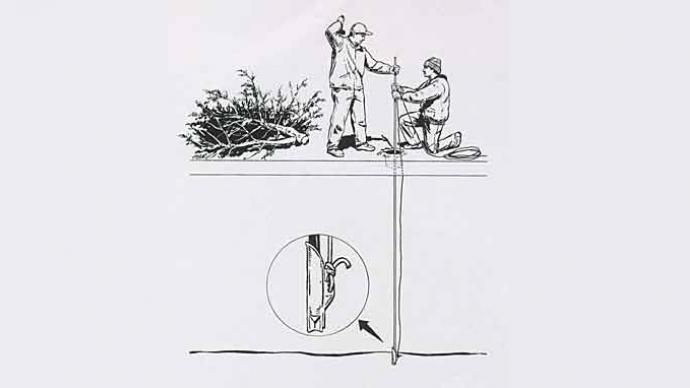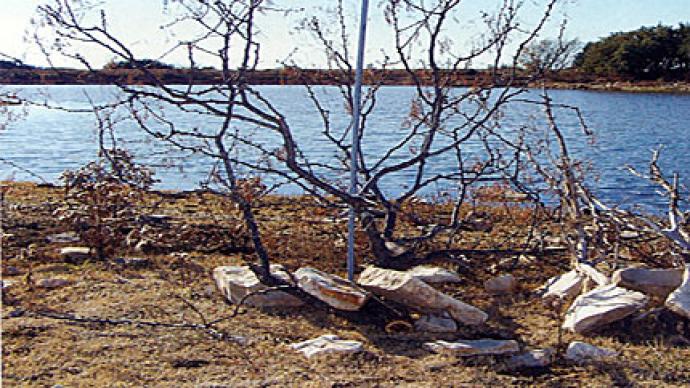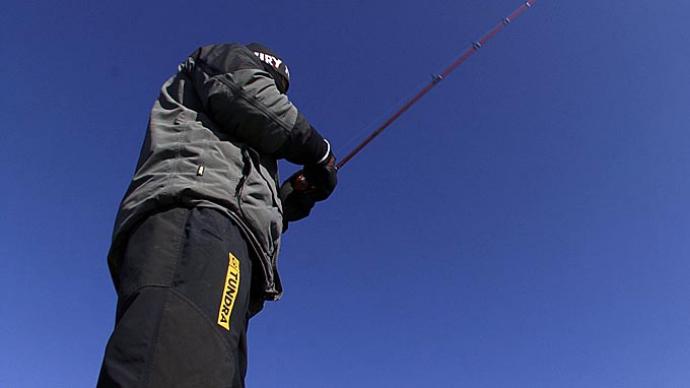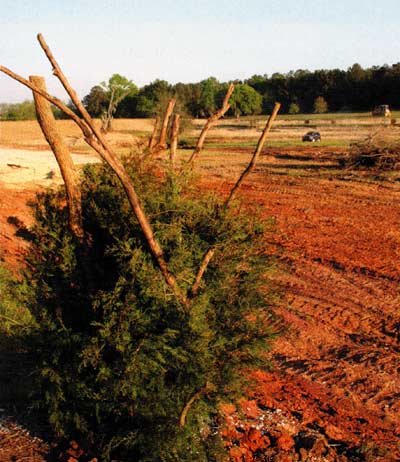
This time of year, the phone will ring several times from folks wanting to improve habitat in their ponds by adding cedar trees. Some of those guys also tell me they talk with local Christmas tree lot managers about coming by right after Christmas, trailer behind a pickup truck, to collect unsold trees, haul them to the lake, and put them out as fish attractors. Heck, I've had several people over the years boast how they beat the trash trucks and snagged people's trees off the curb in the neighborhood before the sanitary engineers can scoop them up to be ground into mulch.
How well do these trees work as fish attractors? Do they fit into a habitat plan?
Many times over the years a crew of us bundled smaller trees and big limbs, tethered them with a concrete block, and dropped them overboard from a boat or barge, into spots we believed needed the extra cover.
Many times, after we put out the last pile for the day, we'd fire up the electrofishing boat, go right over the piles we just launched, and presto-chango, fish were already finding it. Small fish, that is.
When we add cedar or Christmas trees for habitat, the density of its limbs attracts the smaller fish in that pond. When you think about it, having something for the smallest fish makes great sense. The thick needle mass and small limbs of these trees effectively attract those small ones, giving them a few more days, maybe weeks, perhaps even a few months to not be eaten by their bigger brethren. The longer they live, the bigger they get. Which, by the way, those bigger fish are soon attracted to said trees because they sense the opportunity for a fast lunch.
About fifteen years ago, a bunch of workers and I launched more than 50 cedar brush piles into a 125-acre east Texas lake. Many of these were pretty big piles, mind you. Some were at least 10 feet square and 6-7 feet tall. Within a few days, the landowner was ecstatic to be able to catch bass concentrating around the piles. By then, we'd figured out we needed to cover an area at least 8 feet square and six feet tall to be effective. Baitfish flocked in, and bass quickly came around.
The next spring, we launched the electrofishing boat and captured the biggest bass we'd seen in that lake—all of them around one of those brush piles.
Fast forward about 5 years. Catch rates around those brush piles had declined measurably. By Year 7, we brought new technology for the time, side-scan sonar, and went looking for those piles. To my amazement, more than half of them had basically disappeared, collapsed and sunken into the muddy lake bottom. Of those remaining, not one of them had enough substance to effectively attract fish. Those piles had collapsed into a small pile of debris. Not one was taller than two feet off the lake bottom. Not one.
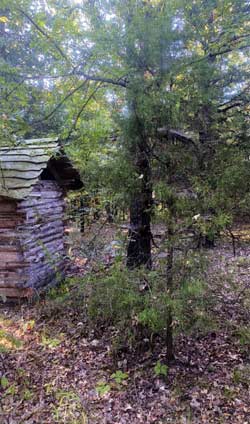
I remember a conversation with Dr. Dave Willis about that time where he'd seen the same thing in Midwest ponds. He pulled up some pictures that showed what happened to cedar trees in ponds. His images were pond bottoms that had been drained and you could see what the remnants looked like.
Here's what happens when we put these types of trees in the water. Within a year to 18-months, all the needles are gone. By the middle of Year 3, most of the smallest limbs have deteriorated and fallen off. By the end of Year 5, most of the medium-sized, twig limbs, are gone. By the end of Year 7, there's a trunk and the main limbs, shortened dramatically. If the pond has any depth of mud right there, much of our effort of years ago has pretty much sunken and is no longer effective.
Is there a better way? Yes, there is. It takes quite a bit more work, but if you can make your trees stand up, like they grow in the woods, they'll last longer. As we think about it, what happens to a tree that falls in the woods? It does the very same thing as what happens to it under water. It loses its leaves, the small limbs succumb to gravity, and the tree collapses and breaks down. Under water, if you can keep your trees upright, their function lasts much longer. It's more work, but worth it.
Think forest.
The more surface area you can cover, the more effective your trees will be. Sure, it's a pain in the neck to take Christmas trees, trim the lower branches, stick them in a five-gallon bucket, add concrete, and then deploy them under water where they won't fall over.
If you'll go to the extra trouble, those trees, in groups that cover more area, will be much more effective over a longer period of time.
As you ponder this concept, think about this. If you can add trees in buckets, stand them up, and put 15-20 in an area bigger than a pickup truck, you've created an element of habitat that adds to the community. Placing them 5-7 feet apart then brings in the smaller fish as well as your larger predators that will take advantage of the space between the trees. With the vertical water column filled, and square-footage offered, you've done something much more significant.
This method adds another 4-5 years of effectiveness to your efforts.
Of course, you are still dealing with something that will break down over time, you've just bought more time. Be sure to mark the placement areas because it's a good idea to add more mass every 3-4 years to keep the density thick enough for the smallest fish.
What fuels most decisions to add trees to a lake boils down to a fundamental lack of habitat. Part of that habitat is used to attract small fish. Some of it attracts bigger fish. While adding trees doesn't necessarily extrapolate to growing more fish, it can sure protect smaller fish to grow larger to become more significant in the food chain.
Plus, attracting catchable fish to areas where you can actually find them easier makes pretty good sense, doesn't it?
Reprinted with permission from Pond Boss Magazine

